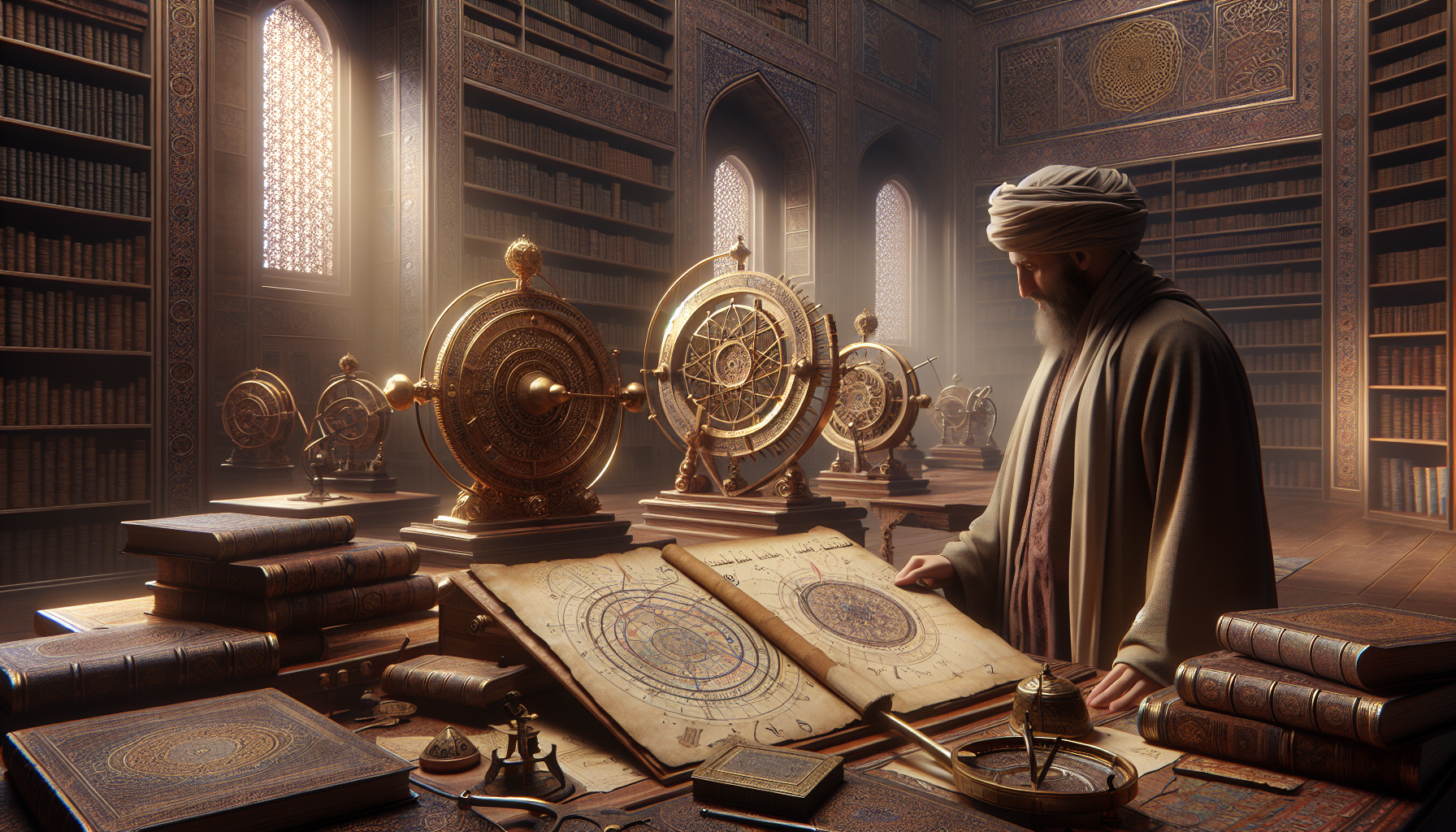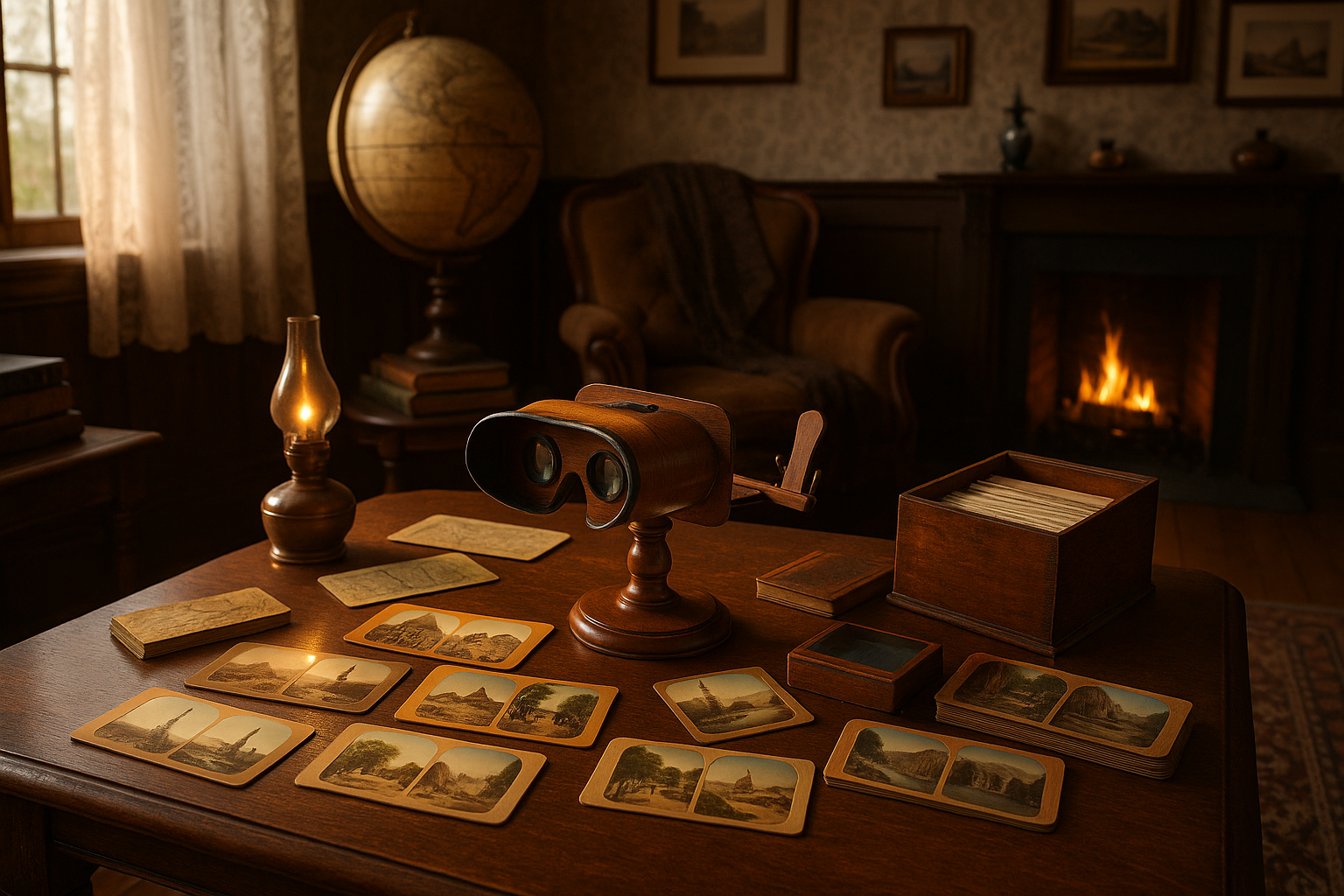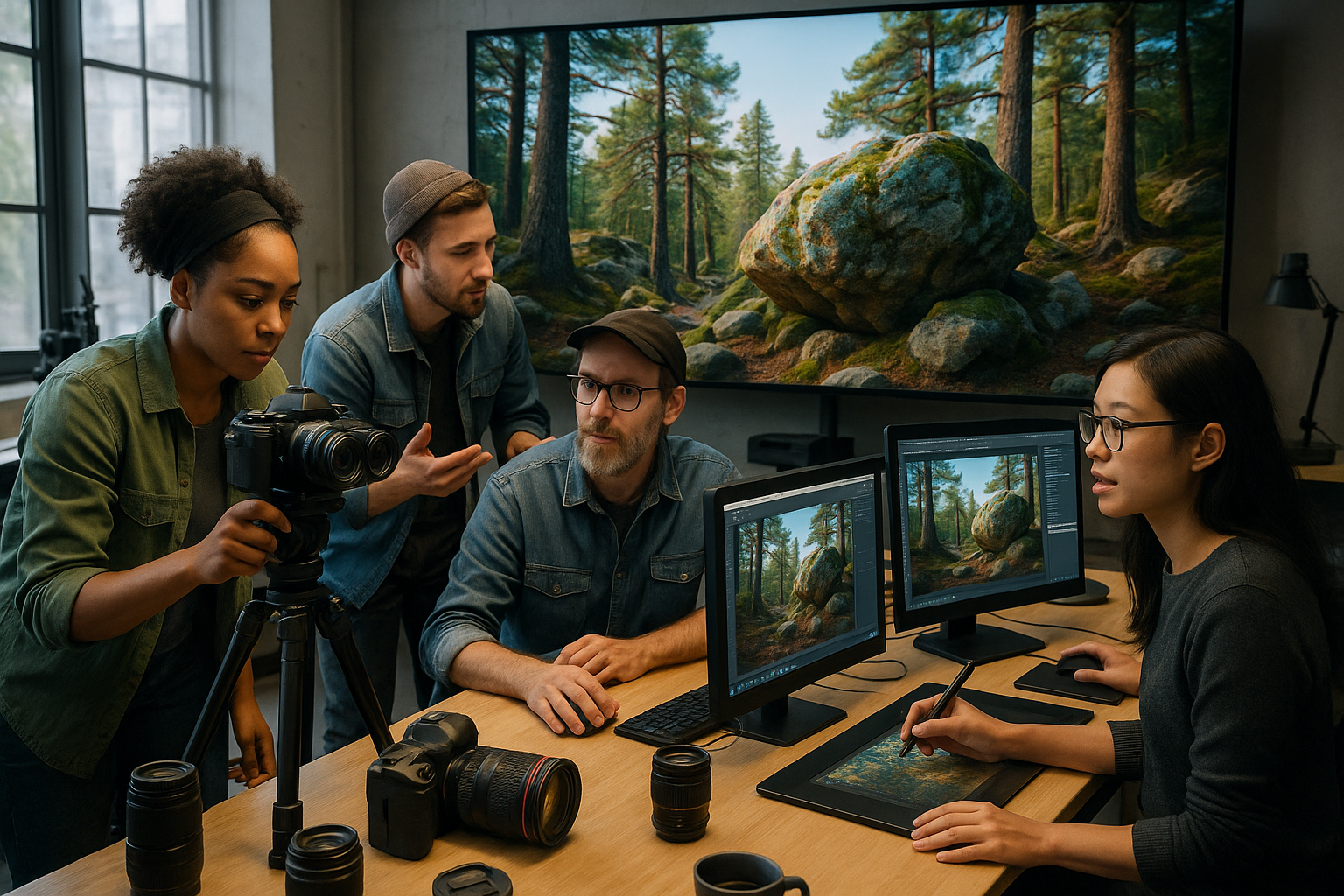In a world where modern technology often steals the spotlight, the rich tapestry of historical scientific achievement can sometimes be overshadowed. Yet, hidden within the pages of history are remarkable stories of discovery, innovation, and brilliance that continue to influence our lives today. Among these, the achievements of Islamic science stand as a testament to a time when scholars from the Islamic Golden Age pioneered advances in fields as diverse as astronomy, medicine, mathematics, and chemistry. These scholars, driven by an insatiable curiosity and a deep reverence for knowledge, laid the groundwork for many of the scientific principles we take for granted today. 🌟
“Unlocking the Secrets of Obscura: A Journey Through Islamic Science’s Hidden Gems” invites you to embark on a fascinating exploration of this lesser-known legacy. As we delve into this rich history, we will unearth the stories of iconic figures such as Al-Khwarizmi, whose works in algebra and algorithms form the bedrock of computer science; Ibn al-Haytham, the father of optics, whose insights into light and vision revolutionized the way we perceive the world; and Al-Razi, whose contributions to medicine set the stage for modern clinical practices. These luminaries, among many others, serve as a reminder of the incredible potential of human ingenuity when fueled by a passion for discovery.
This journey through Islamic science will not only illuminate the past but also inspire a deeper appreciation for the interconnectedness of cultures in the pursuit of knowledge. Through the lenses of history, science, and culture, we will explore how these hidden gems of Islamic scholarship continue to impact contemporary thought and innovation. Prepare to be captivated by tales of intellectual adventure, groundbreaking experiments, and the relentless pursuit of truth. As we unlock these secrets, we invite you to reflect on the timeless nature of inquiry and the ever-present human drive to explore the unknown. 📚✨
The Dawn of Islamic Science: Foundations and Key Figures
In the annals of history, the Islamic Golden Age stands as a beacon of enlightenment, innovation, and exploration. Spanning from the 8th to the 14th century, this era was marked by an unprecedented burst of scientific, cultural, and intellectual growth within the Islamic world. The foundations of this remarkable period were laid by visionary scholars who, driven by curiosity and a profound thirst for knowledge, made groundbreaking contributions to various fields. This quest for understanding was deeply intertwined with the Islamic faith, which encouraged the pursuit of knowledge as a divine duty.
Key figures such as Al-Khwarizmi, Avicenna, and Alhazen emerged during this time, each making indelible marks in their respective fields. Al-Khwarizmi, often hailed as the father of algebra, introduced concepts that laid the groundwork for modern mathematics. His works, translated into Latin, paved the way for the development of mathematical principles in Europe. Avicenna, a polymath, authored “The Canon of Medicine,” a text that became a cornerstone in both the Islamic and Western worlds for centuries. Alhazen, a pioneer in optics, revolutionized the way we understand light and vision.
These luminaries, among many others, thrived in an environment that valued intellectual pursuit. The establishment of institutions like the House of Wisdom in Baghdad exemplifies the commitment to scholarly endeavors. This institution was not merely a library but a vibrant hub of translation, study, and innovation. Scholars from diverse backgrounds gathered here, fostering an exchange of ideas that transcended cultural and linguistic barriers. This collaborative spirit was instrumental in the synthesis of knowledge, allowing Islamic scholars to build upon the legacies of ancient Greek, Roman, and Persian civilizations.
Mathematics: Algebra, Algorithms, and Beyond
The field of mathematics saw revolutionary advancements during the Islamic Golden Age. Al-Khwarizmi’s seminal work on algebra, “Kitab al-Jabr wal-Muqabala,” not only introduced the concept of solving quadratic equations but also laid the foundation for the algorithmic processes that underpin modern computing. The very term “algorithm” is derived from the Latinized form of his name, “Algoritmi.” This highlights the lasting impact of his contributions on contemporary technology and science.
Another significant figure in this domain was Omar Khayyam, renowned for his contributions to algebra and geometry. His method of solving cubic equations and his insights into the geometric properties of conic sections were far ahead of his time. These mathematical innovations were not confined to theory; they had practical applications in architecture, engineering, and astronomy, influencing the design of complex structures and the development of astronomical instruments.
| Mathematician | Contribution | Impact |
|---|---|---|
| Al-Khwarizmi | Introduced Algebra | Foundation of modern mathematics |
| Omar Khayyam | Solutions to cubic equations | Advanced algebra and geometry |
Astronomy: Mapping the Heavens
Astronomy, a science revered by many cultures, received a significant boost from Islamic scholars. Driven by both religious and scientific curiosity, these scholars meticulously charted the stars and planets, developing sophisticated models of the cosmos. The construction of observatories, such as the one in Maragha, facilitated precise astronomical observations and calculations. These institutions were equipped with advanced instruments like the astrolabe and the armillary sphere, which were crucial for navigation and timekeeping.
One of the most notable astronomers of this era was Al-Battani, whose observations and calculations of celestial bodies were remarkably accurate. His works influenced European astronomers, including Copernicus, who cited Al-Battani in his revolutionary heliocentric model of the solar system. Another pivotal figure was Ulugh Beg, whose observatory in Samarkand produced one of the most accurate star catalogs of the time, reflecting the precision and dedication of Islamic astronomers.
The Medical Marvels of the Islamic World
The contributions of Islamic scholars to medicine are profound and enduring. The works of Avicenna and Al-Razi, among others, laid the groundwork for modern medical practices. Avicenna’s “The Canon of Medicine” was an encyclopedic compilation of medical knowledge, integrating the medical traditions of Galen and Hippocrates with new insights. It served as a medical authority in Europe and the Middle East for centuries, testifying to its comprehensive and systematic approach.
Al-Razi, a polymath, is credited with numerous medical advancements, including the identification of smallpox and measles as distinct diseases. His emphasis on clinical observation and the use of case studies revolutionized diagnostic methods and patient care. The medical institutions established during this period, such as the Bimaristan hospitals, were well-organized centers for treatment and research, reflecting the sophisticated healthcare system developed by Islamic scholars.
Islamic physicians also made significant strides in pharmacology, developing a wide array of remedies and herbal treatments. Their systematic approach to the classification of diseases and the formulation of treatments laid the foundation for modern pharmacological practices. This holistic approach to medicine, combining empirical observation with theoretical knowledge, underscores the scientific rigor of the Islamic Golden Age.
Surgery and Anatomy: Pioneering Procedures
In the realm of surgery and anatomy, Islamic scholars pushed the boundaries of medical knowledge. Al-Zahrawi, often regarded as the father of surgery, compiled an extensive medical encyclopedia that included detailed illustrations and descriptions of surgical instruments and procedures. His work, “Al-Tasrif,” was a critical reference for surgeons in both the Islamic world and medieval Europe, influencing surgical practices for centuries.
The advancements in surgical techniques and the understanding of human anatomy during this period were remarkable. Scholars conducted detailed anatomical studies, which were crucial for the development of surgical procedures and the treatment of various ailments. The emphasis on empirical observation and experimentation exemplifies the scientific approach of Islamic medicine.
The Philosophical Underpinnings of Islamic Science
The intellectual vibrancy of the Islamic Golden Age was not limited to the empirical sciences; it extended deeply into the realm of philosophy. Islamic philosophers, often referred to as “faylasufs,” played a crucial role in integrating Greek philosophical traditions with Islamic thought. This synthesis resulted in a rich tapestry of ideas that explored the nature of reality, existence, and knowledge.
Figures such as Al-Farabi and Ibn Rushd (Averroes) were instrumental in this intellectual endeavor. Al-Farabi, known for his works on political philosophy and metaphysics, sought to harmonize the ideas of Plato and Aristotle with Islamic principles. His vision of a virtuous society, governed by wisdom and reason, resonated with both Islamic and Western thinkers. Ibn Rushd, on the other hand, is celebrated for his commentaries on Aristotle, which rekindled interest in Aristotelian philosophy in medieval Europe and laid the groundwork for the Renaissance.
This philosophical exploration was not merely theoretical; it had practical implications for the development of scientific thought. The emphasis on reason, logic, and empirical evidence provided a strong foundation for scientific inquiry. This intellectual framework encouraged scholars to question, investigate, and explore the natural world, leading to the remarkable scientific achievements of the Islamic Golden Age.
Theology and Science: A Harmonious Relationship
The relationship between theology and science in the Islamic world was one of mutual reinforcement rather than conflict. Islamic scholars viewed the pursuit of knowledge as a form of worship, a means to understand the divine creation. This perspective fostered an environment where scientific inquiry was not only accepted but encouraged as a way to glorify God and unravel the mysteries of His creation.
This harmonious relationship between faith and reason is exemplified in the works of scholars like Al-Ghazali, who explored the interplay between philosophy, science, and theology. While he critiqued certain aspects of Greek philosophy, he acknowledged the value of reason and empirical evidence in understanding the natural world. This balanced approach ensured that scientific advancements were integrated into the broader tapestry of Islamic intellectual and spiritual life.
In conclusion, the Islamic Golden Age represents a period of unparalleled intellectual and scientific achievement. The synthesis of diverse cultural traditions, the establishment of thriving centers of learning, and the integration of philosophical and theological perspectives created a fertile ground for innovation and exploration. The legacy of Islamic science, with its emphasis on reason, empirical observation, and the pursuit of knowledge, continues to inspire and inform our understanding of the world today.
Further Exploration: Visualizing the Legacy
To delve deeper into the fascinating world of Islamic science, we invite you to explore additional resources that provide visual and interactive experiences. The YouTube video “The Islamic Golden Age: Science and Technology” by the channel Al Jazeera English offers an engaging overview of the key contributions and figures of this remarkable era. This video provides a vivid portrayal of the innovative spirit and intellectual curiosity that defined the Islamic Golden Age.
- Al-Khwarizmi: The Father of Algebra and Algorithms
- Avicenna’s “Canon of Medicine”: A Medical Masterpiece
- Al-Battani and Ulugh Beg: Pioneers of Islamic Astronomy

Conclusion
Conclusion: Unlocking the Secrets of Obscura: A Journey Through Islamic Science’s Hidden Gems
In this exploration of the hidden gems of Islamic science, we have embarked on a journey that unravels the profound contributions made by Muslim scholars throughout history. From the pioneering works in astronomy to the intricate developments in mathematics, and the transformative discoveries in medicine, Islamic science has woven a tapestry of knowledge that has significantly shaped our modern understanding of various disciplines.
One of the key highlights of our journey was the exploration of astronomy, where scholars like Al-Battani and Al-Sufi meticulously charted the stars and laid foundational work for future astronomers. Their contributions, characterized by precision and innovation, were instrumental in advancing astronomical knowledge and are still revered today. By integrating the meticulous observations and calculations from these Islamic scholars, modern astronomy has been able to evolve into the precise science it is today. 🌌
In the realm of mathematics, we discovered how the introduction of the Arabic numeral system revolutionized calculations and algebraic concepts. Figures such as Al-Khwarizmi played a pivotal role in developing algorithms that form the basis of computer science today. The profound impact of their work cannot be overstated, as it opened the door to complex problem-solving techniques that are indispensable in various fields, from engineering to economics.
Turning our attention to medicine, we delved into the groundbreaking contributions of physicians like Ibn Sina and Al-Razi, whose works in medical ethics, pharmacology, and surgery were centuries ahead of their time. Their writings, which synthesized knowledge from various cultures and introduced innovative practices, laid the groundwork for modern medical practices and ethical standards. This rich legacy continues to influence contemporary medicine, reminding us of the timeless relevance of their insights. 🏥
Moreover, the Islamic Golden Age was marked by a spirit of inquiry and a thirst for knowledge that transcended cultural and geographical boundaries. This era was characterized by a profound exchange of ideas, where scholars from diverse backgrounds collaborated, debated, and built upon each other’s work. It was this openness and intellectual curiosity that propelled the advancements we have discussed, leaving a lasting impact on the world.
The importance of understanding and appreciating these contributions cannot be overstated. In an age where knowledge is more accessible than ever, recognizing the diverse roots of scientific advancement fosters a greater appreciation for the interconnectedness of human endeavor. It encourages us to celebrate diversity in thought and innovation, and to continue building bridges across cultures and disciplines.
We must also reflect on the lessons this journey offers for today’s world. In a global society facing unprecedented challenges, the spirit of collaboration and inquiry that defined the Islamic Golden Age can serve as a beacon of inspiration. It reminds us of the potential that lies in embracing diversity, fostering dialogue, and pursuing knowledge with an open mind and a compassionate heart.
As we conclude this journey, I encourage you, dear reader, to reflect on the hidden gems of Islamic science and consider how these insights can be applied in your own life or field of study. Whether you are inspired to delve deeper into the history of science, incorporate diverse perspectives into your work, or simply share this knowledge with others, your engagement is vital in keeping the legacy of these scholars alive.
Let’s continue to explore, share, and celebrate the diverse tapestry of human knowledge. Share this article with your friends, colleagues, or anyone who might find inspiration in the remarkable stories of these pioneering scholars. Engage in conversations, leave comments, and let us know how the insights from this journey resonate with you. Together, we can ensure that the secrets of obscura are not just uncovered, but celebrated and cherished for generations to come. ✨
For those interested in further exploring the contributions of Islamic science, I recommend visiting resources such as Islamic Scientific Heritage and The Science Museum, which offer a wealth of information and insights into this fascinating era.
Thank you for joining me on this enlightening journey. May we continue to unlock the secrets of the past and illuminate the path to a brighter future.
Toni Santos is a visual historian and artisan whose creative lens is captivated by the forgotten marvels of antique optical devices. Through his thoughtful storytelling, Toni revives the instruments that once transformed light into wonder—camera obscuras, magic lanterns, kaleidoscopes, and other ingenious tools that shaped our earliest visual imaginations.
His journey is rooted in a fascination with how humans have long sought to bend, reflect, and reveal the unseen. Whether tracing the mechanical poetry of 19th-century projectors or illustrating the tactile elegance of early lenses, Toni’s work invites us to see vision itself as an evolving art form.
Blending handcrafted design with historical inquiry, Toni brings to life the material soul of these devices—celebrating not just how they functioned, but what they meant. His creations and curated stories illuminate a world where science, illusion, and beauty were intricately linked through glass and brass.
As the curator of Vizovex, Toni shares detailed studies, reconstructed artifacts, and immersive content that help others rediscover the origins of visual technology and the magic of analog perception.
His work is a tribute to:
The craftsmanship behind early visual instruments
The wonder of seeing through the eyes of another century
The intersection of optics, art, and imagination
Whether you’re a collector, a designer, or someone drawn to the lost poetry of vision, Toni welcomes you into a world where light is a storyteller—one prism, one lens, one forgotten invention at a time.





